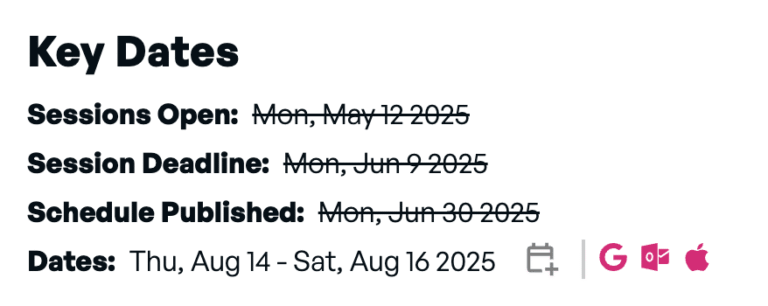
Channel partners and consultancies are central to this transition. They provide the expertise, frameworks, and operational know-how that most organizations cannot develop overnight. With their guidance, enterprises can move beyond pilots and proofs of concept to deploy AI agents that deliver measurable business outcomes.
Agentic AI is no longer experimental. It is quickly becoming the backbone of enterprise operations. Companies that start preparing now will gain a durable advantage, while those that wait risk being left behind.
These breakthroughs have one thing in common: they are powered by AI agents. Unlike the scripted chatbots of the past, AI agents can reason, take action, and adapt in real time. They are capable of orchestrating entire workflows across an enterprise stack, either independently or with human guidance. For many organizations, this marks the first true step into agentic AI, where intelligence is not just responding but actively shaping outcomes.
Laying the Right Foundations
This requires organizations to rethink how they design processes. Instead of mapping steps, leaders must map intents. Partners can help guide this transition by facilitating design-thinking workshops, identifying high-value use cases, and restructuring workflows around outcomes. The payoff is agility: processes that adapt fluidly to circumstances rather than breaking when conditions change.
One of the fastest ways to erode trust in AI is through confident but incorrect answers. Early generative AI systems often suffered from this flaw, producing what came to be known as hallucinations. Enterprises cannot afford that risk. Retrieval-Augmented Generation (RAG) has emerged as a best practice, combining generative models with authoritative enterprise data. Before producing an answer, the system retrieves relevant information from verified knowledge bases, ensuring responses are accurate, contextually relevant, and aligned with brand standards.
Perhaps the most overlooked aspect of agentic AI is that success depends as much on strategy as on technology. Most enterprises lack the in-house expertise to design, deploy, and optimize these systems end to end. Channel partners and consultancies fill this gap by connecting the dots between business strategy, data infrastructure, and technical execution.
Equally important is explainability. Users need to see why an agent made a decision, not just the output. Channel partners are helping enterprises deploy monitoring frameworks, build governance layers, and implement transparency tools that sustain trust. They also assist with ongoing model evaluation to catch drift or performance issues before they undermine reliability.
Keeping Intelligence Grounded
The shift underway is not about replacing people with machines. It is about creating intelligent systems that handle the repetitive, the complex, and the cross-functional, while freeing humans to focus on creativity, strategy, and relationships. Those who embrace agentic AI with the right partners will be the ones setting the pace in their industries.
Consultancies are playing a central role in helping organizations unify data across silos, establish real-time pipelines, and deploy enterprise data platforms that can provide agents with rich, context-aware inputs. The goal is to eliminate duplication, resolve conflicts, and ensure that the knowledge base agents draw from is both trusted and comprehensive. Without this foundation, even the most advanced AI frameworks will underperform.
Traditional enterprise workflows often follow rigid sequences of steps, regardless of context. Agentic AI upends this approach by pursuing goals rather than simply executing checklists. Agents evaluate real-time inputs and select the most efficient path toward the desired outcome.
Partners are instrumental in operationalizing this technique. They can design and implement RAG pipelines, integrate them into existing systems, and tune them to specific industry requirements. By doing so, they make AI outputs not only more reliable but also more defensible in regulated environments.
Building Trust Into the Architecture
By Peter Nebel
This is not a trivial decision. The platform selected will dictate how easily the organization can integrate data, enforce governance, and maintain agility as needs evolve. Channel partners bring value here by evaluating the tradeoffs, mapping them against business goals, and ensuring that technology decisions made today won’t become roadblocks tomorrow.
Every successful AI agent initiative begins with aligning technology choices to business priorities. That requires understanding an enterprise’s infrastructure, operating model, and team capabilities. Some organizations will prefer full-featured agent platforms with prebuilt components, while others will choose infrastructure-first approaches that allow for deep customization and control.
Enterprises now face a pressing question: how do they actually implement these systems at scale? The answer often lies in channel partners and consultancies, who can guide organizations through the complexity of conception, design, and deployment.
Preparing for the Future of Work
The best partnerships go beyond implementation. They help organizations identify high-value use cases, align cross-functional stakeholders, and create roadmaps for scaling AI agents across departments. They bring both technical depth and domain expertise, ensuring that AI is not just deployed but truly embedded in the fabric of how work gets done.
Delegating tasks to AI does not mean handing over complete autonomy. Enterprises must embed security, transparency, and explainability at every level of their AI architecture. That means defining clear guardrails, specifying what actions agents can take under what conditions, and ensuring human oversight remains in place.
AI agents are only as effective as the data they consume. If the underlying information is outdated, fragmented, or inaccurate, outcomes will suffer. For that reason, forward-looking enterprises are doubling down on data quality and connectivity as a prerequisite to activating agents.
Across industries, a tectonic shift is underway in how teams get things done. Financial institutions are resolving compliance issues before regulators come calling. Utilities are automatically rerouting service teams in response to outages. Healthcare providers are coordinating patient care across multiple systems without the need for manual intervention.





